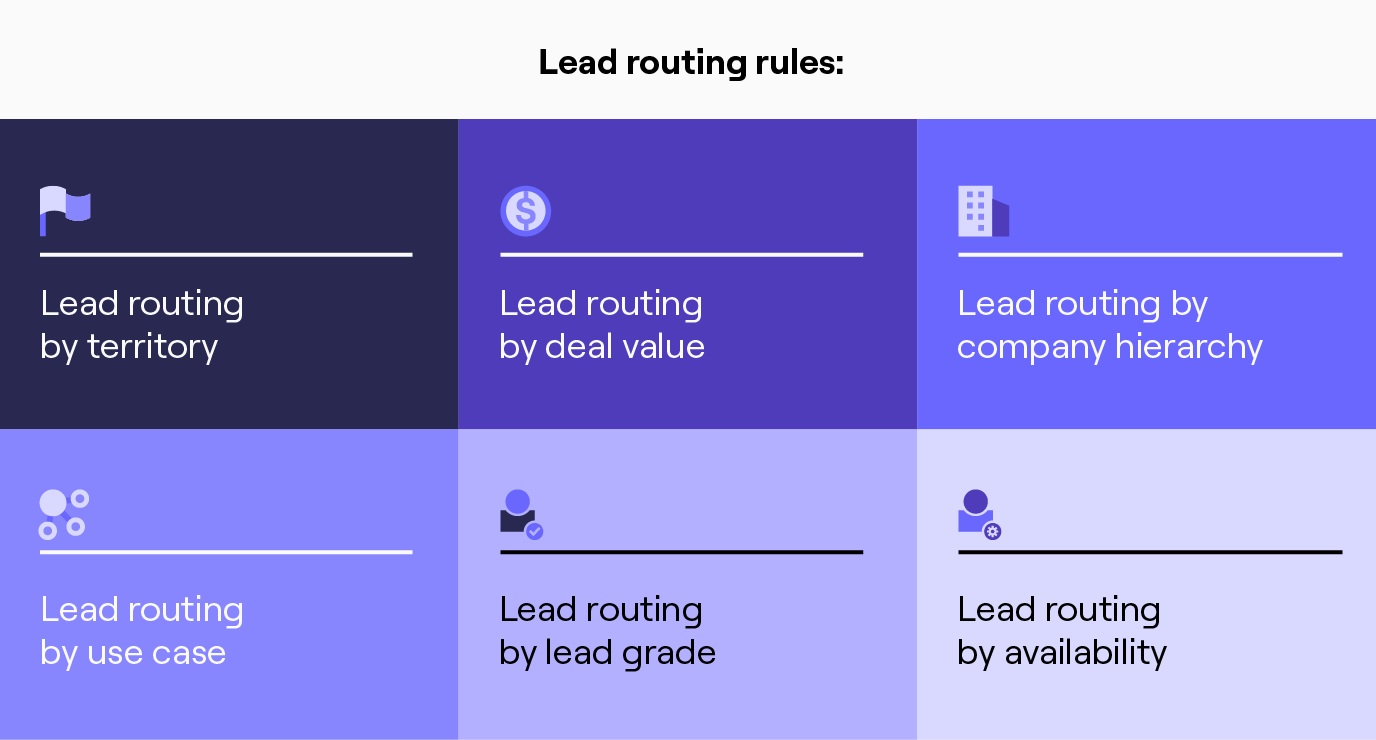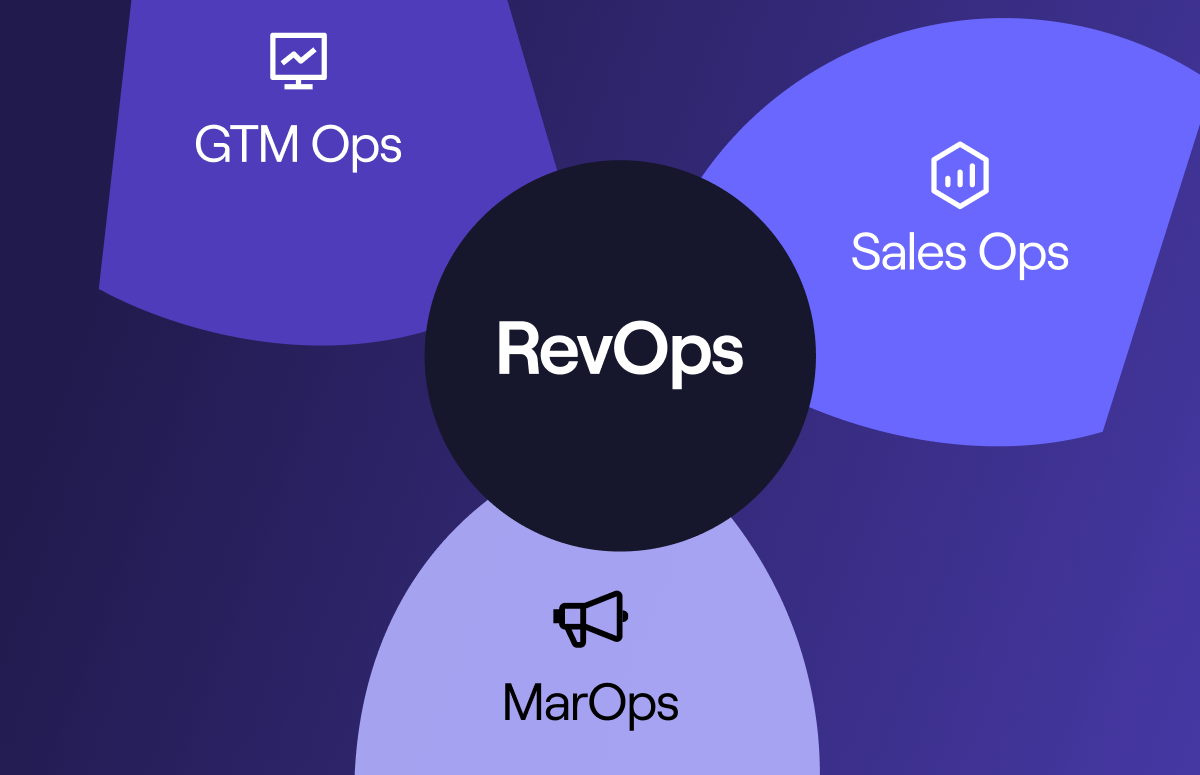What is Lead Routing and How Does It Drive Revenue Growth?
Studies indicate that 99% of organisations fail to email or call an inbound lead within a 5-minute window. This delay in responsiveness can lead to missed opportunities and, potentially, deals lost to competitors.
In fact, there’s a 60-fold increase in the likelihood of customer conversion if responses occur within 24 hours.
Revenue operators, did you know there’s a way of addressing this issue?
All you need to do is implement lead routing!
But what is lead routing and how does it drive growth?
Keep scrolling 👇 for more info.
What is lead routing?
Lead routing is the process of distributing leads across the sales team. It creates a set of criteria or rules determining when and to whom you should assign a lead to. It improves your speed to lead and ensures qualified individuals handle each prospect.
While different departments may have distinct lead routing preferences, the main goal remains the same: to respond to leads faster and more efficiently.
As Taimoor Tariq, a RevOps Leader and Consultant, shared:
“The role of RevOps is all about improving the efficiency of the go-to-market function and looking at which aspects of the customer journey and internal processes we can improve.”
“So the moment somebody signs up for or fills out a form on the website, how quickly they receive a call from an SDR or get in touch with a sales representative, they all need to be experiences governed by RevOps.”
This ensures that organisations maximise every prospect interaction, improving conversion rates, team performances, collaboration and overall revenue growth.
The benefits of lead routing in RevOps
Lead routing ensures that your potential customers get timely responses. By quickly assigning leads to sales reps, businesses can capitalise on the initial interest and engage with prospects while their interest is at its peak.
It guarantees that leads generated by marketing are efficiently handed off to sales for conversion.
This allows teams across departments to collaborate and communicate throughout the customer journey, from the initial engagement with marketing to the sales process. It creates a unified approach to customer acquisition and retention.
In RevOps, customer centricity is paramount, and lead routing ensures that each lead is directed to the team or individual best suited to handle their needs.
Leads may require different approaches based on their industry, product interest or preferences, and lead routing enables businesses to tailor their communication strategies.
This means that customers receive personalised attention, increasing the likelihood of successful conversions and improving the customer experience.
This targeted approach also optimises the allocation of resources across the organisation, reducing duplication of efforts and the likelihood of leads falling through.
Taimoor Tariq said:
“As revenue operators, if you’re building a new automation that will help leads get routed faster, this will help increase the buyer’s satisfaction.
“It reduces the sales cycle, which will impact your velocity and, in turn, your revenue, so it ties back to the bigger company objective.
Lead routing best practices
1. Lead routing software
Lead routing software can automate the collection and distribution of incoming leads. It alleviates manual labour and optimises efficiency
As a new lead enters your CRM through a website form or integration, lead routing software can automatically match them with a salesperson or customer representative. This ensures a timely follow-up and engagement throughout the sales cycle.
2. Create a set of rules and criteria which assign leads to the best-suited individuals
This could be based on location if your team uses sales territories to distribute leads or work across multiple geographies. This ensures that sales representatives understand the regional market.
They could also be routed based on company size so that larger companies are dedicated to enterprise sales teams, or by product or industry so that salespeople are knowledgeable about their specific industry use cases.
You must establish criteria to direct leads to the correct representative. For example, should a lead work for an existing client, they might be directed to the relevant CSM for any potential upselling or cross-selling opportunities based on their existing relationship.
CSMs can educate the lead about other stakeholders using your product and offer tailored solutions based on their organisation’s specifics.
Comparatively, if the lead comes from a non-existing client, you can direct them to an SDR for qualification before routing it to an AE.
You also need to identify the representative’s strengths and weaknesses and match account types with the right employees. This results in an efficient and optimised interaction, which ultimately maximises conversions.
3. Improve efficiency and lead management
These customised rules also govern lead traffic and congestion, enabling accurate lead qualification and optimal distribution among team members. This means that when a sales rep is occupied, leads can be swiftly rerouted and assigned, avoiding delays and reducing wait times.
Accurate data on leads or customers allows lead management systems to collect, analyse and organise customer information effectively. This ensures better scheduling, coordination, and data accuracy.
Automated filtering and centralising lead sheets into one consolidated repository reduces speculation surrounding lead status information. This helps to improve lead management and reduce leakage.
Remember to test these practices with marketing and sales regularly to identify variances in conversion rates.
Lead qualification
Lead qualification identifies the most qualified and high-value prospects. This enhances your lead routing strategy. Why?
It helps push the most valuable potential deals to your sales reps as soon as possible.
Not every inbound lead will be the right fit for your product; lead qualification determines how likely a prospect is to become a customer.
Inbound leads received a grade based on customised criteria, which allows leads exhibiting the right buying behaviour to progress in the sales pipeline.
What does this do for you?
It helps you understand whether a lead is a good fit for your organisation. It also ensures that your reps focus on leads most likely to convert, speeding up the sales cycle and filtering out leads that might waste your sales team’s time.
In order to rank leads effectively, you must identify the most relevant factors to your business. You must also understand your buyer persona and conversion cues.
Where to start?
Define your ICP and create a qualification model aligned with your business. You can base this on data from a number of different sources, such as demographic details, website activities, contact history and customer behaviours.
As Jeff Ignacio said:
“I’ve been working on an account scoring model. A lot of companies might segment their accounts or their regions by using data points that they get from a third-party tool like Cognism. They might use industry, revenue or country to provide a good idea of qualification.”
Third-party tools provide verified company and contact information. With this data, you can grade these leads using ranking systems of 1-100.
Stephen Stouffer, Vice President of Digital Transformation at SaaScend, shared how companies can use AI to qualify leads:
“At the end of the day, you have to optimise efficiency. From a marketing perspective, they’re asking for efficiency around the qualification process or lead generation or efficiency from the end user going from their website to contacting a salesperson.”
“Something that we’ve been doing with our customers is building an ICP profile and feeding it to AI. You can say this is our ideal customer profile; maybe they have greater than $100 million in annual revenue, or maybe the number of employees is over 500. You feed it that context, and then you feed it a domain.”
“So then, when a lead’s been generated, you look at how your lead stacks up against your ICP. For me, I just give it a letter grade from A+ to F, and then feed it into the database. Then sales can prioritise their outreach when they have 1,000 different leads they’re looking at."
How revenue leaders can optimise lead routing with Cognism
As a revenue leader, you know how crucial it is to respond to inbound leads quickly.
Studies show that 99% of organisations fail to contact a lead within the critical 5-minute window, resulting in missed opportunities and deals lost to competitors. In fact, a 60-fold increase in conversion likelihood happens when a lead is responded to within 24 hours.
According to Validity’s The State of CRM Data Management in 2024, “31% of admins reported that poor-quality data costs them at least 20% of their annual revenue”. Cognism helps your team avoid these extra costs.
So, what can you do to ensure that your team never misses a beat when it comes to lead routing?
The answer lies in optimising your sales workflows - and with Cognism, you can take that to the next level.
Let’s explore how.
How Cognism Enrich supports lead routing
24% of CRM admins said less than half of their data is accurate and complete in Validity’s report on The State of CRM Data Management in 2024. Lead routing relies on accurate and complete data to function effectively.
That’s where Cognism Enrich comes in. By enhancing the quality of data entering your CRM, Enrich ensures that:
- Leads are enriched with actionable details like location, industry, and job title.
- Sales teams can set intelligent routing rules based on enriched data.
- CRM data remains fresh and reliable, reducing inefficiencies in lead assignment.
At Cognism, we put our own enrichment solution to the test, resulting in a 1.5x increase in booked meetings.
Antoine Cornet, Head of RevOps at Cognism notes:
“RevOps teams are a precious resource, and data loads shouldn’t consume their time. Cognism Enrich automates those tasks, allowing them to focus on strategic value, regardless of the team size.”
Designed to streamline these processes, Cognism ensures that every lead is routed intelligently and effectively, improving both team performance and the overall customer experience.
With Cognism Enrich, incoming leads from web forms are automatically enriched, enabling accurate routing to the appropriate sales team member for follow-up.
Another key benefit of lead routing is improved alignment between sales and marketing teams.
Optimised lead routing strengthens collaboration between sales and marketing teams, ensuring alignment on lead distribution and strategy. By leveraging Cognism’s intelligent workflows, both teams work seamlessly to nurture and convert prospects.
What is account assignment?
Account assignment, on the other hand, focuses on strategic prospecting and distributing accounts among sales teams.
Unlike lead routing, which deals with inbound leads, account assignment is about proactively building and managing target account lists based on your ideal customer profile (ICP).
According to Validity’s 2024 report, “76% of admins said consumer demands for personalisation have increased the volume and complexity of data they manage”.
This growing complexity means sales teams need tools like Cognism to manage and assign accounts effectively, ensuring personalised outreach at scale.
Strategic account-focused success is key to ensuring your reps perform to the best of their ability. With enriched data, intelligent tools, and tailored training, they can maximise results and build stronger customer relationships.
Using Cognism’s Sales Companion’s Web App, Revenue leaders can:
- Search for ICP-aligned accounts.
- Build detailed target lists based on personas and business needs.
- Assign accounts strategically to sales teams, ensuring the right fit and expertise.
How Cognism can optimise account assignment for revenue leaders
Centralise sales operations with our web app
Cognism’s Sales Companion centralised prospecting and account management. It enables Revenue leaders to create detailed target lists aligned with ICP criteria, such as company size, location, or industry.
Once lists are built, accounts can be seamlessly assigned to sales teams for focused outreach.
This centralised approach accelerates the qualification process and ensures that your sales reps focus on high-value opportunities. By streamlining account assignment, Sales Companion improves team performance and drives revenue growth.
Leverage up-to-date insights with Sales Companion
Once accounts are assigned, Cognism’s Sales Companion acts as a personal sales assistant, equipping your team with:
- Real-time insights on key contacts, enriched with phone-verified Diamond Data®. Diamond Data® delivers unparalleled mobile accuracy, connecting with decision makers ~3x more than the average*.
- Next-best actionable recommendations for precise, tailored outreach.
With these tools, your sales reps can engage accounts with confidence, using personalised messaging that resonates. This precision-driven approach improves engagement and accelerates the path to closed deals.
Lead routing: Key takeaways
- Lead routing optimises and enhances revenue growth.
- It improves your speed-to-lead and customer experiences and ensures qualified individuals handle each prospect.
- It allows organisations to maximise every prospect interaction, improving conversion rates and ultimately, revenue growth.
Looking for more? Check out our RevOps guide - it’ll help you establish a Single Source of Truth within your RevOps function.
Click here 👇




